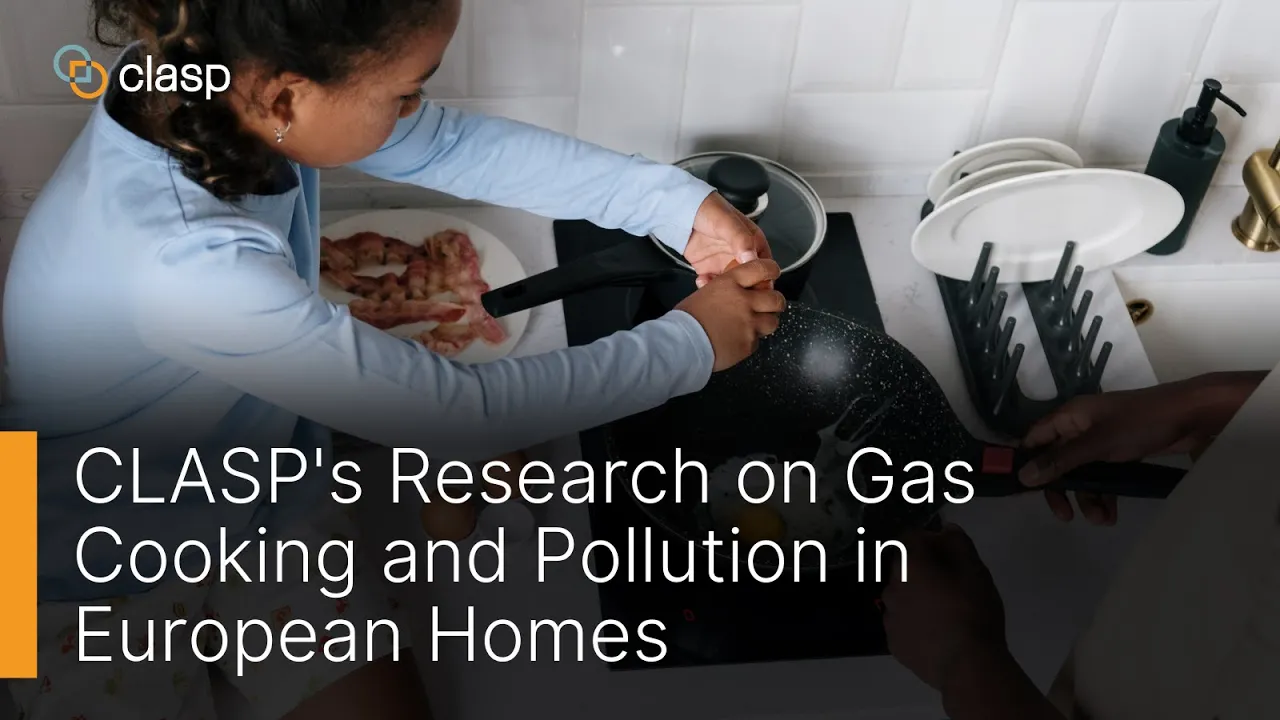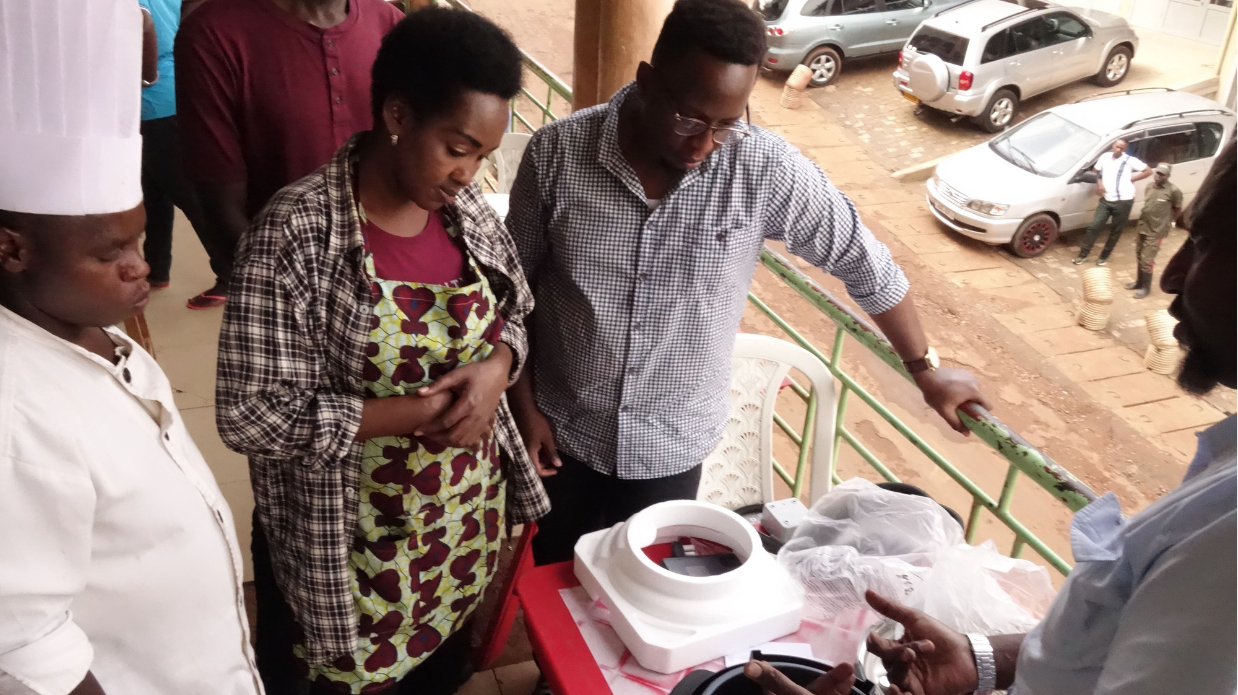National Cooking Trends from Six European Countries: Insights and Policy Recommendations
Despite advancements in electric cooking technologies, millions of households across Europe still rely on gas for cooking. Gas cooking appliances contribute to high levels of indoor air pollution and pose substantial health, environmental, and economic challenges.
CLASP’s has produced incisive factsheets on gas cooking trends in six countries. These provide insights and policy recommendations, covering consumer trends, as well as health, environmental, and cost concerns in these countries:
The Risks and the Solutions
CLASP’s research reveals elevated levels of NO2 in homes using gas stoves and ovens compared to those using electric alternatives. These levels exceed benchmarks set by World Health Organization guidelines and European Union (EU) and United Kingdom (UK) limits for outdoor air pollution.
- Health Impacts: Exposure to high levels of pollution is known to cause strokes, heart disease, lung cancer, and both chronic and acute respiratory diseases, including asthma.
- Climate Change: Gas cooking contradicts net-zero and emissions reduction targets, highlighting the need to transition to electric alternatives. The reliance on fossil fuels for domestic cooking contributes to indoor air pollution and greenhouse gas emissions, undermining efforts to mitigate the impacts of climate change.
- Consumer Trends: Despite health and environmental concerns, many consumers remain unaware of the risks of gas cooking.
- Cost Considerations: Gas cooking masks significant societal costs. While gas appliances may offer initial cost savings in some cases, the hidden costs associated with indoor air pollution, such as healthcare expenses and environmental impacts, outweigh any apparent economic benefits.
- Policy Recommendations and Regulatory Measures: In the EU and the UK, Ecodesign and Energy Labelling policies provide opportunities to advance energy-efficient and healthier electric alternatives. At the national level, governments can accelerate the transition to electric cooking through electricity tariff reforms, targeted subsidies, awareness campaigns, and holistic support. Incentives and financial assistance programs can encourage households to adopt electric cooking technologies, facilitating a shift towards cleaner and more sustainable cooking practices.
For more information on the topic, visit https://www.clasp.ngo/cook-cleaner-europe/.
Beyond the Flames: Expert Insights on Gas Cooking
Have you ever wondered about the health and environmental impacts of cooking with gas? CLASP asked Professor Frank Kelly from Imperial College London, Dr. Laura Reali, a pediatrician at the Italian Public Health System, and Tony Renucci, managing director at Respire, to shed some light on the topic.
- What happens to the air in our homes when we use gas cooking appliances?
CLASP research confirms that gas stoves and ovens emit harmful pollutants such as nitrogen dioxide (NO2) directly into people’s homes. These substances can have detrimental effects on our respiratory systems and overall health.
- What are the health risks linked to cooking with gas?
Gas-cooking households experience elevated levels of NO2, an air pollutant linked to respiratory diseases like asthma. Research by the World Health Organization (WHO) on NO2 found: “The main health outcomes of interest are respiratory symptoms, bronchoconstriction, increased bronchial reactivity, airway inflammation and decrease in immune defence leading to increased susceptibility to respiratory infection.”
However, the health risks associated with gas cooking extend beyond respiratory issues. Studies suggest that exposure to gas emissions can impact everything from our lungs to our brains, affecting individuals across all stages of life. Find out more about the health risks in this CLASP report.
- Are some people more sensitive to the health impacts linked to cooking with gas?
Due to their developing lungs, children have a heightened sensitivity to pollutants. People with pre-existing health conditions, and the elderly are also more vulnerable to the health impacts of gas cooking. The WHO found that children living in homes with gas cooking appliances have a 20% increased risk of respiratory illnesses. It’s crucial to understand and address these vulnerabilities to protect those most sensitive to the risks of cooking with gas.
- Are people aware of the impacts of cooking with gas?
Many people are unaware of the elevated levels of indoor air pollution created by gas cooking. As a result, there is a lack of awareness among the general population on the health risks linked to the use of gas cooking appliances.
According to consumer surveys conducted in 2023 by CLASP and Opinium Research, in France, 53% of surveyed adults believe that the use of gas cooking appliances isn’t linked to any health issues, whereas only 34% of adults in the United Kingdom have concerns over cooking with gas appliances in their homes. CLASP found that between 58 and 74% of consumers in Europe would consider getting rid of their gas cooker if they knew it was linked with health issues.
- What can people do to protect themselves from the health risks linked to cooking with gas appliances?
People can minimize their exposure to gas cooking emissions in a number of ways. From switching to electric cooking appliances, to ensuring proper ventilation, simple actions can help reduce the health risks associated with gas cooking. Find out how to improve air quality in your home when you have a gas hob or oven here.
- Why is now the right time to switch to electric cooking alternatives?
Given the mounting evidence that links emissions from gas cooking appliances with health risks, now is the time for governments and policymakers to incentivize the transition to safer, efficient electric alternatives. CLASP research reveals that in the European Union (EU) and the United Kingdom (UK), over 180 million people are at risk of exposure to levels of indoor air pollution that exceed the EU and WHO recommended levels for outdoor air pollution. In addition, approximately €3.5 billion is spent annually in the EU and £1.4 billion in the UK in health-related costs linked to indoor air pollution from gas cooking.
- What is the solution?
To protect public health and reduce the national health costs related to cooking with gas, governments should accelerate and incentivize the transition to electric alternatives. Policymakers can tackle indoor air pollution at the source through Ecodesign standards and energy labeling policies, and define appropriate limits for indoor pollutant levels.
With energy-efficient electric options widely available in the market, it’s time to reconsider our reliance on gas appliances and embrace a cleaner, healthier way forward to protect both people and the planet.
For more information on the topic, visit https://www.clasp.ngo/cook-cleaner-europe.
CLASP Study Shows Appliance Efficiency Standards in the US Prevented Up to 4,400 Pollutant-Related Deaths Annually, Valued at $41 Billion
CLASP’s latest report, “How National Appliance and Equipment Energy Conservation Standards Can Improve Public Health and Advance Justice40 Initiative Goals,” finds that standards adopted over the past 30 years have led to substantial reductions in fine particulate matter (PM2.5) and PM2.5 precursor emissions, which are harmful pollutants that can cause respiratory and cardiovascular health issues such as asthma, lung cancer, or heart disease. Data from 2017 suggest that this reduction could prevent between 1,900 and 4,400 PM2.5-related deaths every year. Using the value of statistical life, this translates to monetary benefits of $18 to $41 billion.
Importantly, CLASP’s study finds that the benefits of these standards are distributed relatively equitably among communities with those designated as disadvantaged by Justice40, an initiative aiming to ensure that 40% of the overall benefit of federal climate investments go to disadvantaged communities, receiving a significant share.
These findings demonstrate the far-reaching positive impacts of standards and highlight the importance of the US Department of Energy meeting its deadlines for updating approximately 50 appliance efficiency standards, including for water heaters, by January 2025. Finalizing all pending standards could avert 2.5 billion metric tons of greenhouse gas emissions while saving consumers nearly $1 trillion over 30 years, according to the agency.
The report outlines actionable recommendations to amplify the benefits of standards and suggests ways to measure their contribution towards Justice40 goals. By implementing these recommendations, policymakers, industry stakeholders, and communities can work together to ensure that national appliance standards continue to drive positive change for all people and the planet.
How National Appliance and Equipment Energy Conservation Standards Can Improve Public Health and Advance Justice40 Initiative Goals
Gain insight into the critical role of national appliance standards in improving public health and discover how to measure their impact against Justice40 goals. Find actionable recommendations for maximizing their benefits for a healthier, greener, and fairer future.
Key findings
- National appliance standards have led to significant reductions in PM2.5 and PM2.5 precursor emissions, avoiding hundreds of thousands of tons of pollutants in 2017.
- These standards prevented between 1,900 and 4,400 PM2.5-related deaths in 2017, translating to monetary benefits of $18 to $41 billion.
- Health benefits from national appliance standards have been distributed relatively equitably. Communities designated as disadvantaged by Justice40, representing 33% of the total population, have received 36% of the health benefits.
Recommendations
- The US Department of Energy must meet legal deadlines for updating appliance efficiency standards to maximize public health benefits.
- Governments should expand outreach and incentives to promote efficient appliance adoption, prioritizing disadvantaged communities, renters, and low-income households.
- Engage disadvantaged communities and people of color in all stages of policy development and implementation.
___________________________________________________________________________________________
Additional Resources:
Financing for Impact: Powering Change in Northern Uganda with Solar
Appliances Supporting Life-Saving Health Facilities
The Rhino Camp is a refugee settlement camp in Northern Uganda. Within the camp is the Ofua Health Center 3, a solar-powered medical facility with just two doctors attending to a population of over 45,000 people. Dr. Gideon Anguerini highlights a pressing challenge: the center’s reliance on a single, energy-inefficient fridge unsuitable for solar power. The health center aims to purchase an efficient solar-powered fridge from POPO Africa, an appliance distributor based in Uganda. With the fridge, the health center’s services will be expanded, its energy costs significantly lowered and it can treat more patients.
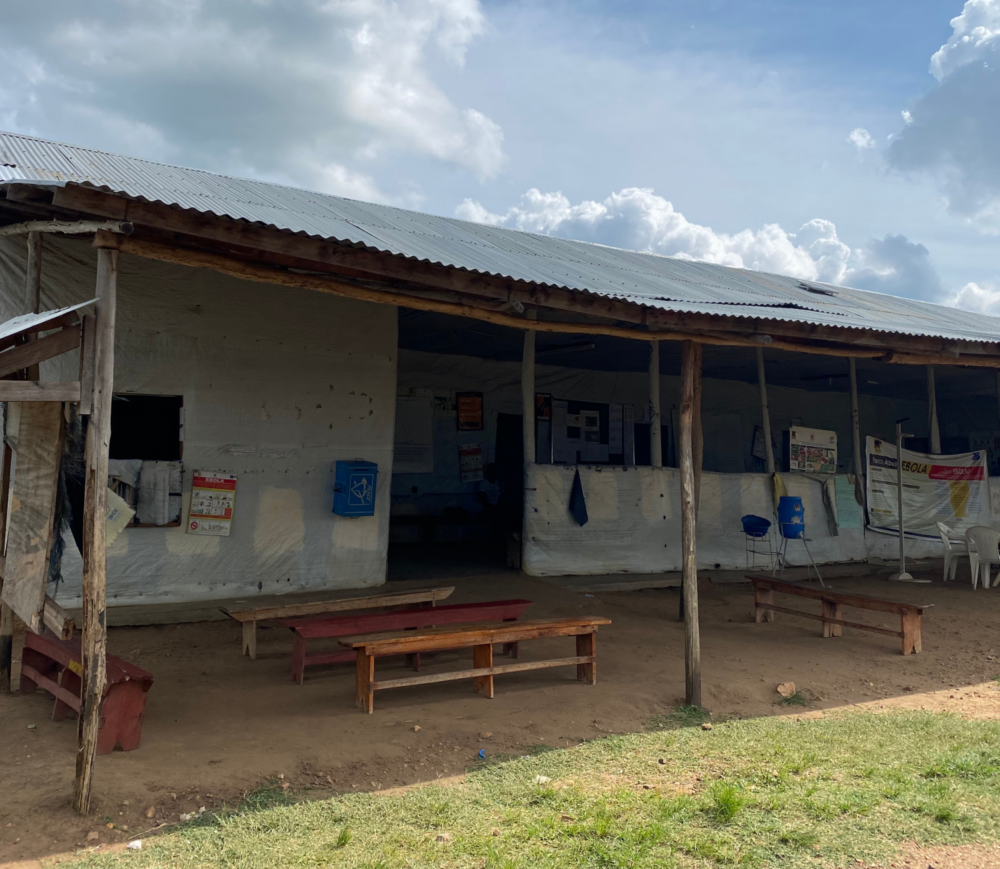
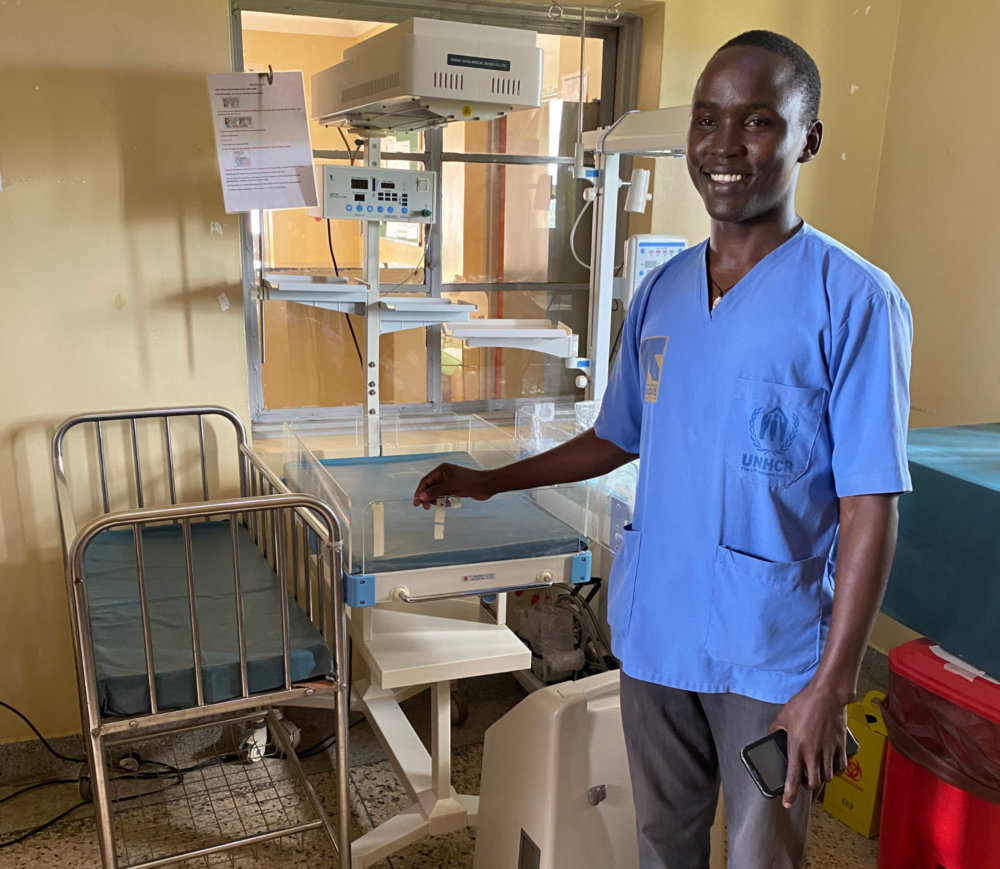
Delivering Change through Solar Solutions
From the outset, POPO Africa’s vision aimed at enhancing maternal health by ensuring that clinics in refugee camps had reliable solar lighting powered by solar battery packs. This expanded, as the company moved into leasing the battery packs to the wider community.
POPO’s solar batteries are a lifeline for community businesses, enabling them to operate after dark, offer phone charging services, and more. With 54 distribution points across five districts, POPO’s impact is widespread, directly employing 75 people and indirectly supporting many more through their distribution network. POPO Africa also places a strong emphasis on women’s economic empowerment, boasting a workforce that is 70% female.

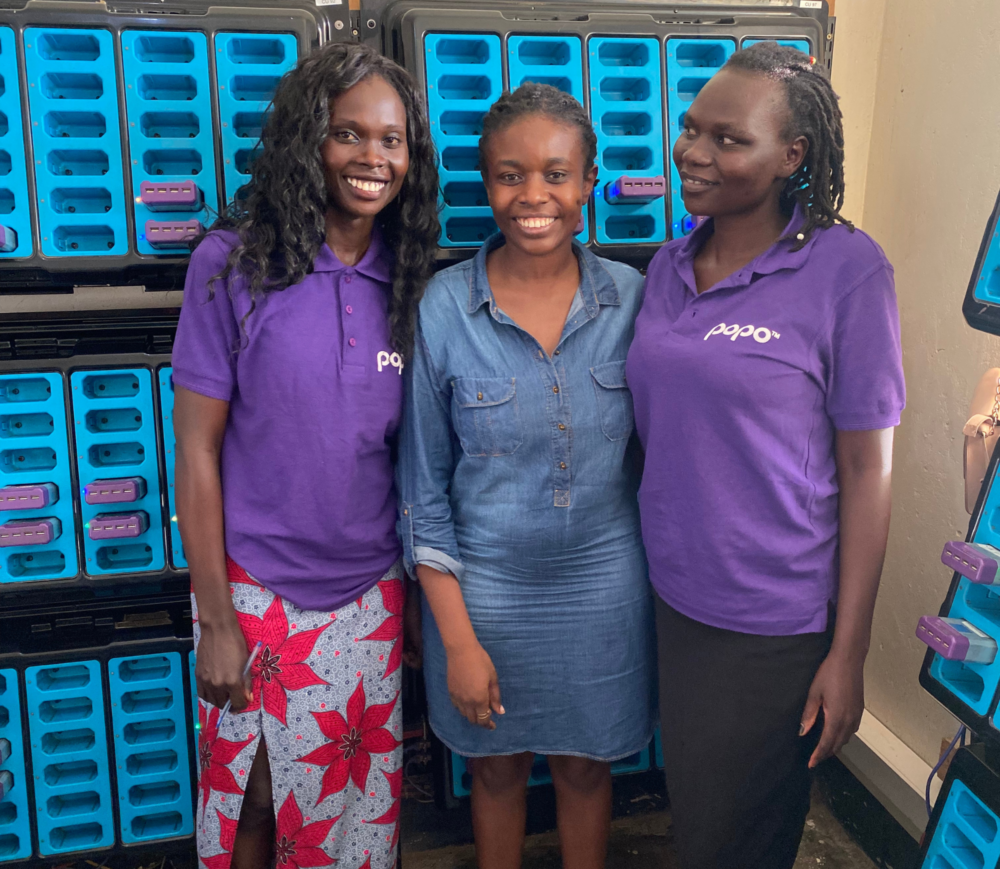
Recognizing the critical need for cooling services POPO aimed to revolutionize the off-grid cold chain service in Northern Uganda. The only barrier to this was capital constraints. POPO could not pursue the cold chain opportunity without external support. With funding from CLASP’s Productive Use Financing Facility, POPO was able to start selling solar-powered refrigerators, that will benefit healthcare facilities and empower local businesses.
Transformative, Impactful Financing
Efficient productive-use appliances (PUAs) like solar-powered refrigerators, pumps, and milling machines can have transformative effects on local communities, small businesses, and the environment. However, despite their potential for income generation, PUA sales remain remarkably low in emerging markets due to their relatively high upfront costs and a lack of access to finance. CLASP set up the Productive Use Financing Facility to address these challenges by helping distribution companies like POPO Africa sell their products at lower prices.
Overcoming Capital Constraints
With CLASP’s Facility’s procurement subsidies and capacity-building grant, POPO is working to sell approximately 140 refrigerators within a year. They have made that transformative step into the cold chain market and are now extending affordable, off-grid cooling to their customers, like the Ofua Health Center.
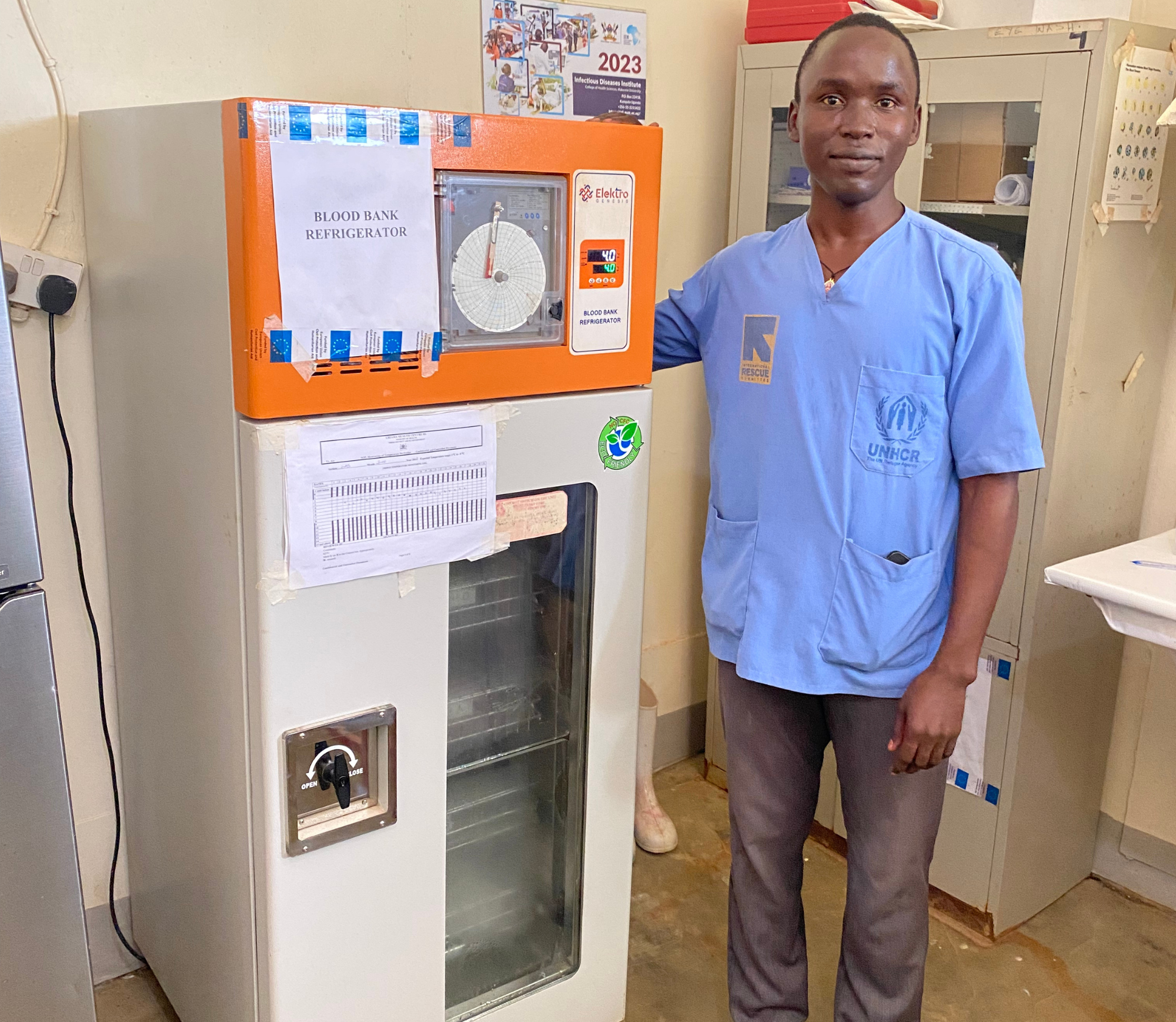
With each solar-powered battery and refrigerator, POPO is helping to build a future where energy is accessible, businesses thrive, and healthcare advances, even in the most remote corners of the world.
***
CLASP is proud to be coordinating the Productive Use Financing Facility, supported by The Global Energy Alliance for People and Planet (GEAPP). By supporting businesses like POPO Africa, CLASP ensures more transformative appliances are made accessible to those who need them the most. Find out more about the Facility.
Financing for Impact: Powering Change in Northern Uganda with Solar
Appliances Supporting Life-Saving Health Facilities
The Rhino Camp is a refugee settlement camp in Northern Uganda. Within the camp is the Ofua Health Center 3, a solar-powered medical facility with just two doctors attending to a population of over 45,000 people. Dr. Gideon Anguerini highlights a pressing challenge: the center’s reliance on a single, energy-inefficient fridge unsuitable for solar power. The health center aims to purchase an efficient solar-powered fridge from POPO Africa, an appliance distributor based in Uganda. With the fridge, the health center’s services will be expanded, its energy costs significantly lowered and it can treat more patients.


Delivering Change through Solar Solutions
From the outset, POPO Africa’s vision aimed at enhancing maternal health by ensuring that clinics in refugee camps had reliable solar lighting powered by solar battery packs. This expanded, as the company moved into leasing the battery packs to the wider community.
POPO’s solar batteries are a lifeline for community businesses, enabling them to operate after dark, offer phone charging services, and more. With 54 distribution points across five districts, POPO’s impact is widespread, directly employing 75 people and indirectly supporting many more through their distribution network. POPO Africa also places a strong emphasis on women’s economic empowerment, boasting a workforce that is 70% female.


Recognizing the critical need for cooling services POPO aimed to revolutionize the off-grid cold chain service in Northern Uganda. The only barrier to this was capital constraints. POPO could not pursue the cold chain opportunity without external support. With funding from CLASP’s Productive Use Financing Facility, POPO was able to start selling solar-powered refrigerators, that will benefit healthcare facilities and empower local businesses.
Transformative, Impactful Financing
Efficient productive-use appliances (PUAs) like solar-powered refrigerators, pumps, and milling machines can have transformative effects on local communities, small businesses, and the environment. However, despite their potential for income generation, PUA sales remain remarkably low in emerging markets due to their relatively high upfront costs and a lack of access to finance. CLASP set up the Productive Use Financing Facility to address these challenges by helping distribution companies like POPO Africa sell their products at lower prices.
Overcoming Capital Constraints
With CLASP’s Facility’s procurement subsidies and capacity-building grant, POPO is working to sell approximately 140 refrigerators within a year. They have made that transformative step into the cold chain market and are now extending affordable, off-grid cooling to their customers, like the Ofua Health Center.

With each solar-powered battery and refrigerator, POPO is helping to build a future where energy is accessible, businesses thrive, and healthcare advances, even in the most remote corners of the world.
***
CLASP is proud to be coordinating the Productive Use Financing Facility, supported by The Global Energy Alliance for People and Planet (GEAPP). By supporting businesses like POPO Africa, CLASP ensures more transformative appliances are made accessible to those who need them the most. Find out more about the Facility.
Electrifying Cooking for Healthier and Cleaner Homes
In our daily lives, an often-overlooked activity may be impacting our health more than we realize. When we burn gas in our homes, we’re not just preparing meals; we’re cooking up a cocktail of pollutants. These pollutants pose health risks, particularly for vulnerable individuals and those with pre-existing conditions like asthma, according to environmental health expert Frank Kelly, a professor at Imperial College London. Transitioning from gas to electric hobs and ovens can eliminate the health risks associated with gas combustion, Kelly said.
The field study
In 2023, CLASP, in collaboration with TNO and Opinium, carried out the largest indoor air quality study focused on gas cooking ever conducted in Europe to understand the extent of the problem. Researchers provided air quality sensors to 250 households across 7 European countries. Over two weeks, the sensors measured and recorded levels of nitrogen dioxide (NO2), carbon dioxide, and particulate matter emitted in kitchens.
In kitchens equipped with gas stoves, researchers found that levels of NO2 often exceed the World Health Organization’s (WHO) air quality guidelines and outdoor air pollution limits in the European Union (EU) and the United Kingdom (UK). The study’s findings demonstrate the necessity to improve air quality in our homes, along with a critical need to inform people about the health risks associated with gas cooking and transition to cleaner cooking alternatives.
The hidden cost of cooking with gas
The repercussions extend beyond health; they’re also impacting our wallets. Each year, indoor air pollution related to gas cooking is estimated to cost the European Union around €3.5 billion and the UK government approximately £1.4 billion. These costs include lost earnings, decreased productivity, increased healthcare expenses, and missed educational opportunities.
A recipe for change
Professor Frank Kelly emphasizes that, given the wealth of information linking gas use to health issues and climate impact, “the use of gas is now outdated.” There is a pressing need for change. The most significant decrease in indoor concentrations of NO2 can be accomplished by making the switch from gas to electric cooking appliances. Accelerating the transition to electric cooking is identified by experts as the most effective solution, alongside raising awareness about the need for adequate ventilation.
To safeguard public health, action is required. Governments, industry leaders, healthcare providers, researchers, and individuals all have a role to play in reducing indoor air pollution related to gas cooking:
- Government: Policymakers across the EU and UK can help accelerate the transition to electric cooking by strengthening appliance standards and establishing energy labels for hobs that inform consumers about pollution levels.
- Industry: Manufacturers and retailers should privilege the production of electric cooking appliances, make the most efficient products more affordable, and discontinue the production of gas hobs and ovens.
- Civil society and healthcare: Advocates should raise awareness of the health risks associated with the use of gas cooking appliances.
- Research: By conducting further studies and fostering innovation, researchers can contribute valuable insights to guide policy decisions and technological advancements.
- On an individual level, adopting cleaner electric hobs and ovens is recommended to limit exposure to NO2. Ventilating kitchens during and after cooking is a simple, practical step toward mitigating the health risks associated with the use of gas hobs and ovens.
Our culinary choices carry significant health, economic, and environmental weight. Let’s make informed choices to protect our health and contribute to a cleaner future.
CLASP is working with governments to ensure they consider frameworks and incentives that encourage a transition away from gas cooking to electric alternatives.
For more information, visit https://www.clasp.ngo/cook-cleaner-europe/.
For a busy Kigali restaurant, a safer way to cook
Every day at lunchtime, dozens of hungry customers find their way to Chez Clémance, a small restaurant in Kigali, Rwanda. In the back of the shop, owner Muhimpundu Clémance and chef Nsengiyumva Célestin would traditionally have prepared their most popular dishes — meat, rice, beans, and yams — over charcoal fires.
But while their delicious food keeps patrons happy, this cooking method generates air pollution, damaging the environment and posing a health risk for staff. What’s more, the flames present a fire hazard.
Testing clean cooking solutions
Electric pressure cookers offer many benefits over cooking on charcoal. Durable, safe, and affordable, they lessen exposure to harmful air pollutants, lowering cooking costs while reducing deforestation and the burning of fossil fuels.
To understand how these appliances would perform in a busy commercial kitchen, CLASP and Sustainable Energy for All (SEforALL) selected Chez Clémance to field-test two electric pressure cookers over a period of four months. CLASP’s team set up the cookers, along with monitors designed to measure their efficiency. The researchers are also surveying the business owners to understand whether these appliances are a good fit for their needs.
For a busy Kigali restaurant, a safer way to cook
Measuring efficiency and business viability
While laboratory testing gives a glimpse of appliance performance in a controlled environment, it provides only a limited representation of how products operate under the rigors of real use. Field-testing like that underway at Chez Clémance is critical to measure the appliance’s efficiency over a set time. It can quantify time savings and additional income generated or saved, as well as calculate avoided CO2.
These measurements are particularly important in newly developing appliance markets where there may not be a history of appliance usage or community exposure to how appliances can impact the livelihoods of first-time users.
About the project
This project is part of the Productive Use of Energy Pilot Study in Rwanda, conducted by CLASP with the support of Sustainable Energy for All (SEforALL) and the World Bank. The appliances being tested are electric pressure cookers, electric bikes, solar water pumps, and solar powered fridges.
CLASP works enhance the access to affordable, energy-efficient appliances to improve the lives of people and reduce the impact on our climate.
Improving Public Health & Advancing Equity Goals with Appliance Energy Efficiency Standards
Federal energy efficiency standards for appliances and equipment lead to cleaner air, creating health benefits. By conserving energy, standards reduce both indirect emissions (from power plants) and direct emissions (from fossil fuel appliances). This decreases human exposure to fine particulate matter (PM2.5) pollution, a harmful form of particle pollution capable of entering the lungs and bloodstream and contributing to increased incidences of respiratory and cardiovascular health complications.
This factsheet summarizes the key findings from a forthcoming report that estimates the distribution of public health benefits in disadvantaged communities in the United States. Specifically, it estimates the reductions in PM2.5-related deaths that can be attributed to standards adopted over a 30-year period and explores how standards can contribute to Justice40 Initiative goals.
Gas Cooking Appliances Cause Regular Pollution Breaches in Homes across Europe
Brussels, Belgium – Cooking on gas regularly fills kitchens with air pollution above recommended levels, the largest-ever home monitoring study in Europe has found.
The World Health Organization (WHO) daily limit value for nitrogen dioxide (NO2) exposure was broken in most (57.3%) of the homes using gas hobs and/or gas ovens that were tested under normal living conditions by leading scientific researchers.
NO2 levels were found to be almost twice as high in kitchens, living rooms, and bedrooms in homes cooking on gas compared to those using electric appliances, on average. Breaches in 15.9% of homes using electric appliances were caused mainly by outside air pollution blowing in, the researchers say.
The research, commissioned by nonprofit energy efficiency group CLASP, was conducted by the Netherlands Organisation for Applied Scientific Research (TNO). Sensors were placed in 247 homes [1] in seven countries with large populations cooking on gas and childhood asthma cases linked to cooking on gas.
Breaching limit values increases health risks. NO2 can cause inflammation of human airways, coughing and wheezing, reduced lung function, and increased asthma attacks, especially in children. Children in homes with a gas cooking appliance have a 20% increased risk of suffering a lower respiratory illness, the WHO estimates.
Pollution spikes in homes cooking on gas could last several hours and were more intense the longer the cooking time, the researchers found. Added together, the WHO daily limit was breached for 3.25 days over the 13-day testing period, on average. Where kitchens had fans to extract fumes outdoors, they did not clear much pollution. This is because of improper use, the researchers think.
Extrapolating to a year, the data shows that a quarter of homes (25%) cooking on gas breached EU and UK hourly NO2 limits for outside air quality. Authorities across Europe have been forced to respond to breaches of these limits. Yet EU regulators have not set limits for indoor air pollution.
Little has been done to prevent NO2 pollution from gas cooking appliances in Europe, CLASP wrote in its report summarizing the research. Various regulations could limit air pollution from appliances, but fail to, it said. The problem could be corrected at EU level next year when new design and labelling rules are expected to be adopted.
At a stakeholder meeting with EU officials, initially set for 30 November 2023 and postponed until March 2024, CLASP will call for a new EU energy label comparing gas and electric hob efficiency and highlighting pollution levels.
Nearly a third (32.5%) of homes in the EU cook on gas. But few are aware of the risks due to the invisible nature of the pollution, according to a recent opinion poll commissioned by CLASP and conducted by Opinium. If made aware, up to three quarters of respondents (74%) say they would consider getting rid of their gas appliances.
Nicole Kearney, CLASP Europe Director, said: “Our research reveals the severity of air pollution caused by gas cooking appliances in homes across Europe. Cooking up a change starts with awareness. Empowering people with knowledge on the health risks of these products is essential, and they need resources to upgrade to cleaner and healthier hobs and ovens. In turn, governments must protect public health, tackling air pollution at the source and supporting the transition to cleaner cooking.”
TNO senior scientist, Piet Jacobs, said: “Based on our field study data we estimate that in about 25% of the European kitchens cooking on gas the EU NO2 limit value for 1-hour exposure is exceeded, where outside levels were below these values. Changing to electric cooking, preferably combined with use of well-designed ventilation hoods to reduce exposure to high levels of particulate matter from cooking, can bring these values down to below recommended levels.”
Professor Frank Kelly of Imperial College London said: “Gas hobs and ovens are a major source of indoor air pollution, including NO2, which can both exacerbate existing health conditions and potentially lead to new respiratory illnesses. For children with asthma, the presence of gas cooking appliances can intensify their symptoms. Removing these appliances from our homes will improve indoor air quality and mitigate potential risks to public health.”
The scientists also measured for fine particulate matter. In kitchens, this is caused by outdoor pollution blowing in and food cooking, rather than the appliance fuel source. The scientists found no significant difference in emissions between homes cooking on gas and electric.
Ends
CLASP Report – Clearing the Air: Gas Cooking and Pollution in European Homes
TNO Report – Health Effects in Europe from Cooking on Gas – Phase II Field Study
Press releases are available in the following languages:
Dutch, English (UK), English (US), French, German, Hungarian, Italian, Romanian, Slovak, Spanish.
Contacts
- CLASP Europe director Nicole Kearney (EN) +44 75 4486 5924
- CLASP Europe senior communications associate Païline Caroni (EN, FR) +32 473 127 674.
- ICL professor Frank Kelly (EN) +44 (0)20 7594 8098
- CLASP communications consultant Jack Hunter (EN) +33 751 051 805
- TNO press officer Maarten Lörtzer (EN, NL) +31 620420732.
About CLASP:
CLASP is an international nonprofit leading the research and promotion of appliance efficiency and energy access to improve the lives of people and the planet. CLASP works to combat climate change and drive the transition to a more energy-efficient and just future where no one is left behind. Headquartered in Washington DC, and based in Beijing, Brussels, Dehli, Jakarta and Nairobi, CLASP works with governments, appliance manufacturers and partners to advance positive change on a global scale.
Notes
[1] Market research firm Opinium selected 40 homes each in France, Italy, the Netherlands, Romania, Slovakia, Spain, and the UK, where residents cook at least 3 days a week, are non-smokers, and are not near busy main roads or industrial plants. More than 40% of homes include children. One in 5 cook purely on electric, while 4 in 5 cook purely on gas, either ovens, hobs or both. In all homes, sensors were placed in the kitchen, living room and a bedroom to measure NO2, fine particulate matter, and carbon monoxide. Outdoor sensors detected NO2. Participants were told to cook and behave normally. Each was paid €100. Only data from 247 homes that successfully followed instructions over a 13-day period in 2023 were included. The previous largest EU study of exposure to NO2 based on continuous sensor data took readings from 16 homes.

